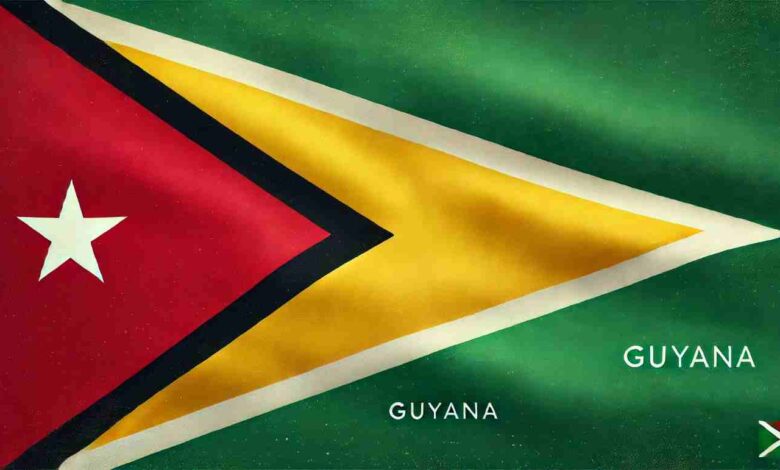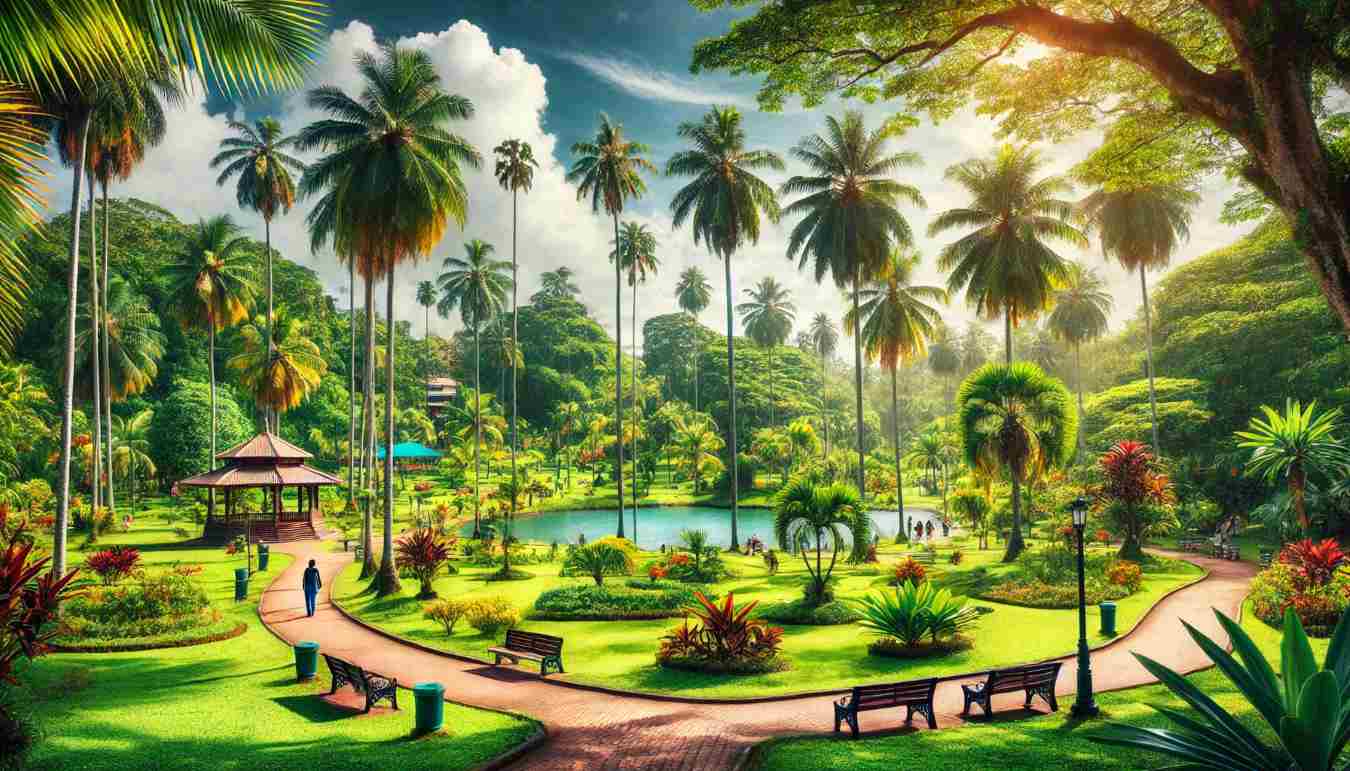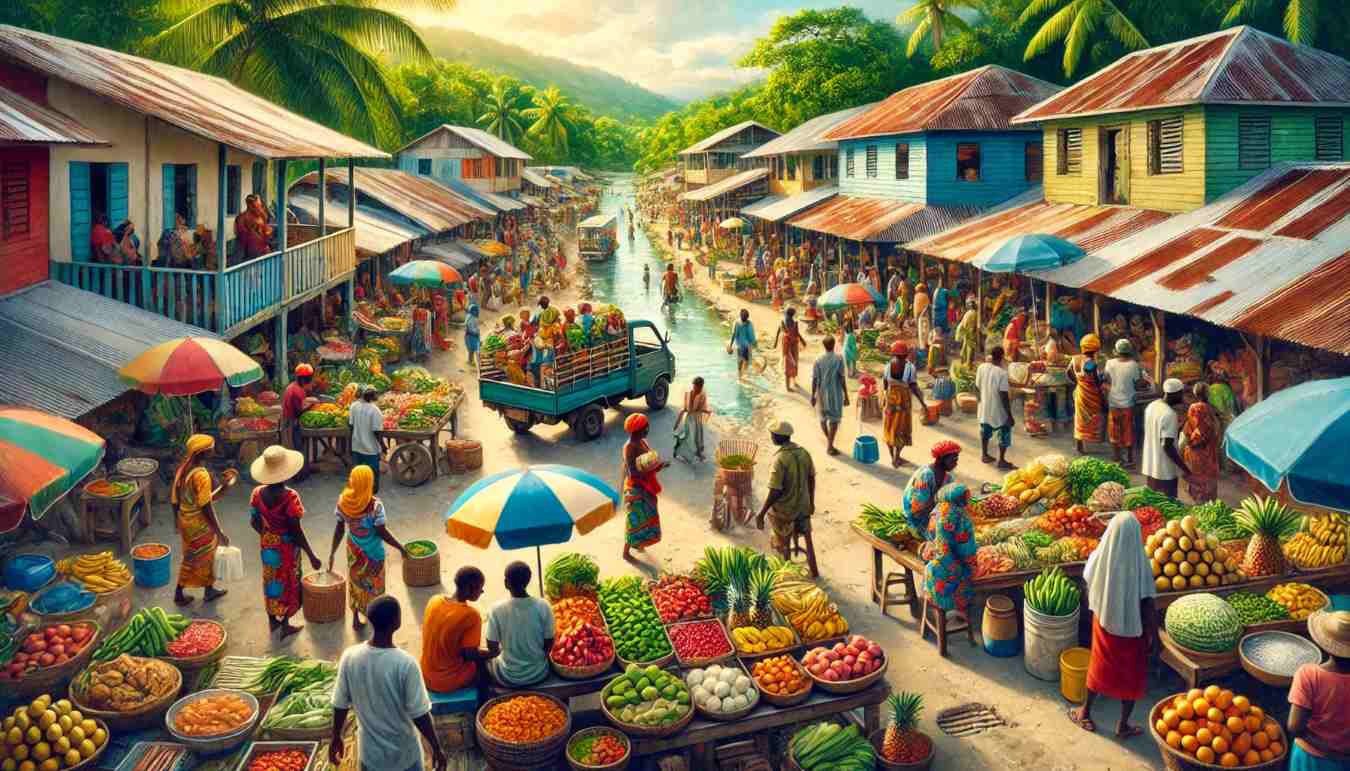The History of the Guyana Flag

Guyana flag national, known as the “Golden Arrowhead,” is an emblem of the country’s rich cultural history and natural resources. It symbolizes the journey of Guyana from its colonial past to an independent nation. Adopted on May 26, 1966, the same day the country gained independence from Britain, the flag was designed by an American vexillologist, Whitney Smith. Its design and colors are not just visually striking, but also steeped in symbolic meaning, representing the aspirations and character of the Guyanese people.
Colonial Influence on Guyana Flag
The Guyana flag prior to independence, when it was more commonly referred to as British Guiana, was a common colonial flag of the British Empire. This flag, from 1875-1966, was a blue field with a Union Jack in the corner signifying that this was a British colony. Over the years, some modification of the design changed, but the colonial flag was always some iteration that reflected British colonial concerns and the importance of overseas trade and the influence of the British Crown. This flag, dating back to colonial times, reminded Guyana of the status of a British colony.

Design of the Golden Arrowhead
The current Guyana flag utterly departs from its colonial predecessor and thus symbolizes independence together with the future of the country as a sovereign nation. The flag is a design in five colors green, red, gold, white, and black and in the forms of geometric shapes. The green of the flag represents Guyana’s rich forests and agriculture, which form one of the main bases of the country’s economy. Agriculture has conventionally formed the backbone of Guyanese society, wherein crops of rice and sugarcane have played major roles both in sustenance and export.
The flag’s central feature is thus a golden-yellow triangle, bordered by white, which extends from the hoist side to the opposite edge. This symbolizes the richness of Guyana in minerals, particularly gold a resource occasioned conventionally to be important to the country. Gold mining is amongst the key industries in Guyana and continues to play a very vital role in Guyana’s economy.
A smaller red is triangularly provided on the hoist side of the flag, with a black border around it. The red triangle symbolizes the zeal, dynamism, and drive of the Guyanese people. The black border outlining the red triangle represents endurance, or the strength and resilience of the nation, especially about its colonial past and its journey toward development and prosperity.
The white border that outlines the gold triangle represents Guyana’s abundant rivers and water resources, which are so vital to both the environment and the people. Guyana is chiefly a land of extensive waterways, the Essequibo, Demerara, and Berbice being three of the main rivers. These have been vital for transportation, agriculture, and everyday life.
Guyana Flag: Symbolism of the Arrowhead
The most striking feature of the flag is the shape of the golden triangle, almost always referred to as the “Golden Arrowhead.” This design element not only stands for the country’s wealth but also represents the indigenous people of Guyana and long has been associated with arrows, used as clear-cut tools for hunting and defense. The arrowhead faces forward, indicating progress, showing precedence the country is taking toward its future.
The forward-pointing arrowhead also symbolizes Guyana’s urge to move forward for growth and a bright future, as depicted with colorful colors that describe the spirit and vigor of the nation. The flag deliberately united the cultural and ethnic diversity of Guyana, often described as a “Land of Six Peoples,” including indigenous groups, descendants of African slaves, and East Indian laborers among others.
The Flag’s Enduring Legacy
The flag has flown without change since its adoption and continues to proudly wave as one of the major symbols of Guyana’s independence and identity. Its simple, powerful design has survived the test of time and represents much more than the physical resources of the country but displays the cultural richness, coupled with the unity of its people.
The flag has also played an important role in fostering national pride. Guyana is a comparatively young independent nation that has harnessed force from political upheaval into rightful economic development. The flag has been a sure reminder of resurgent Guyana, which has the capacity to overcome difficulties against an ever-improving future.
Guyana Flag: Plant and animal life
Guyana’s plant and animal life is remarkably diverse due to its location in the Amazonian rainforest and the country’s wide range of ecosystems, from coastal wetlands to dense tropical forests. Approximately 90% of Guyana’s landmass is covered by forest, making it home to some of the richest biodiversity in the world.

Plant Life
Guyana has a highly diverse tropical flora, dominated by tall trees in the rainforests. Some of the highly valued species for their hardwood include the Mora and Greenheart. Other flora commonly found are bromeliads, orchids, and the palm species. The wetlands, especially those at the coast, support mangrove forests, which play a vital role in protecting the shores from erosion.
Animal Life
The fauna is no less rich: Guyana is a home for several rare and exotic species, including jaguars, giant otters, harpy eagles, and arapaimas a type of one of the largest freshwater fish. Dense forests and rivers save under their canopy a great number of species of birds, amphibians, and reptiles, and that turns Guyana into a real paradise for amateurs of wildlife.
Seeing the giant anteater, howler monkeys, and even its infamous black caiman in rivers and wetlands is not uncommon. This level of biodiversity underlines not only the natural richness of Guyana but also brings into focus the importance of conservation efforts in the face of deforestation and environmental degradation.
Guyana flag: Languages and Religion
Languages in Guyana
With its heritage as a British colony, Guyana is the only country in South America with English as one of its official languages. However, just like any other country, its use of the English language is so immense within its government, education, and even media, making it the leading language in daily life. But Guyana’s linguistic landscape is so much more varied because of its multicultural population.
Nevertheless, it is still one of the most spoken languages, and that is Guyanese Creole, commonly referred to as Creolese. Being a language that emerged during the colonial era, it is basically a mixture of English with African, Indian, and other elements. It also varies depending on the region and social class but shares the use in informal conversations.
Besides English and Creole, other tongues reflect the ethnic variety of this country. For instance, there are the Indo-Guyanese communities, of Indian indentured laborers who came to Guyana in the 19th century; Hindi and Urdu are spoken there. The Arawak and Carib languages, from the indigenous people, continue to exist today in several parts and to a moderate extent among many Amerindians.

Religion in Guyana
Guyana is religiously heterogeneous, with major religions reflecting ethnic composition: Christianity is the largest religion and is followed particularly by the people of African ancestry. Anglicanism is the largest Christian grouping a legacy of British colonization but Catholics, Pentecostals, and Baptists are all represented in significant numbers.
The majority of the Indo-Guyanese community adheres to Hinduism, brought to Guyana by migrant workers from India. Guyana has quite a few Hindu temples, and people widely celebrate festivals such as Diwali. The Indo-Guyanese people also have a sizable sub-populace who are practicing Islam.
Mosques dot the landscape, and people observe Islamic holidays such as Eid. The minority groups coming from the Amerindian communities are usually a mix of Christianity with the traditional belief systems of the indigenous people, thus making for a very unique blend in religious practices.




